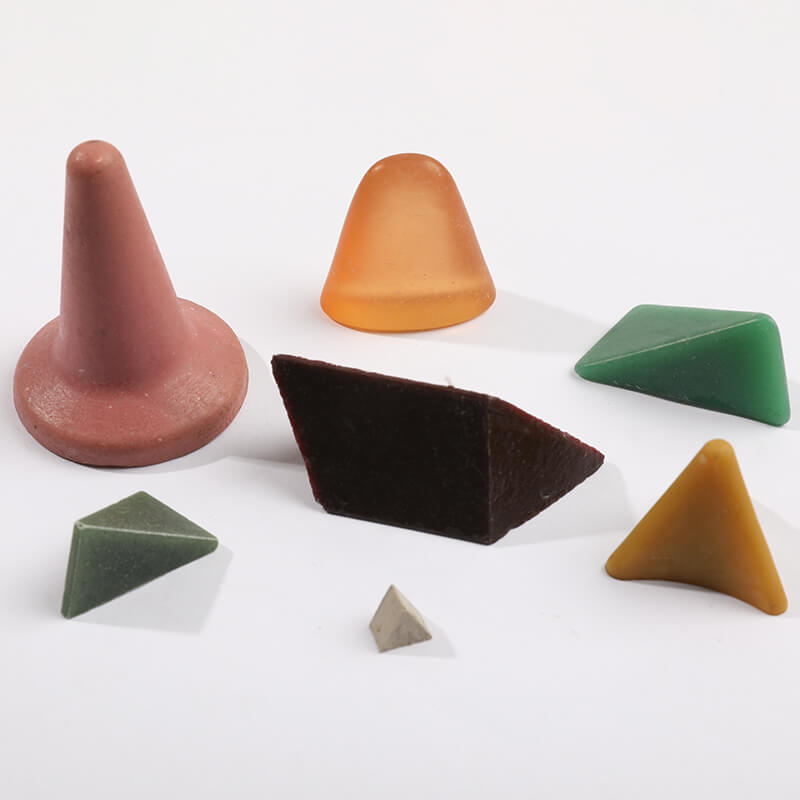
The type of tumbler media that you use in a vibratory finishing machine can make or break the process. The right tumbling media will polish and deburr parts faster, reduce cycle times, and give a better finish. The wrong tumbler media can damage parts, shorten the life of your equipment, and produce unsatisfactory results.
Tumbling media is a combination of abrasives and a binder that holds the abrasive particles together in a tumbling process. There are many different abrasive choices in tumbling media, from coarse to fine, depending on your needs and the material being finished. The binders can also vary. Ceramic tumbling media has a clay or porcelain binder, plastic and synthetic tumbler media have urea formaldehyde or polyester polymers that hold the abrasives in place, and steel is usually held with an acid resistant epoxy resin.

Vibratory Tumbling Media is available in a wide range of shapes, angles and sizes to reach all areas on your parts that can be difficult for other types of finishing equipment to get to. The media is designed to help smoothen surfaces of metal parts, remove burrs and sharp edges and provide a high luster polish on brass cases and cutlery.
Porcelain polishing media is ideal for brass case polishing and cleaning, mint burnishing, and jewelry polishing. Its fine abrasive is suitable for most metal parts, especially those with softer materials such as aluminum and brass. Plastic tumbling media is a good choice for general and precise deburring of metal parts, and it can be used to polish and burnish soft metals like brass and aluminum as well. Manufacturers add abrasives such as sand and silica to plastic tumbler media for improved performance in deburring and polishing.
Natural tumbling media is another option for dry deburring and polishing metal parts. Its fine abrasive, such as walnut shell or corn cob grit, is effective for polishing and burnishing soft metals such as brass and aluminum. This type of tumbling media is cost effective, biodegradable and can be reused over 20 tumbling cycles.
Choosing the right tumbling media for your application depends on the surface finish you need, the part material and the tumbling machine. All tumbling media will eventually break down or erode during use, so it is important to select a type that works within your desired cycle time and cost. The abrasive should be coarse enough to perform the necessary tumbling steps, yet fine enough to achieve your desired finish.
Vibratory Tumbling Media is manufactured in a variety of shapes, sizes and angles to suit all kinds of finishing applications, including polishing, deburring and burnishing. It is ideal for use in a variety of tumbling machines such as rock tumblers, vibratory tumbler bowls and rotary barrel finishing machines. Available in ball, cone, pyramid, angle cut triangle, nipple, tetrahedron, diagonal, shot pin and granule forms. It can be used for abrasive and non-abrasive applications such as metal polishing, rust removal, stress relieving, brightening, deburring, flash or surface metal removal, grinding, milling, edge rounding, cutting, burningishing, and metal preparation processes.